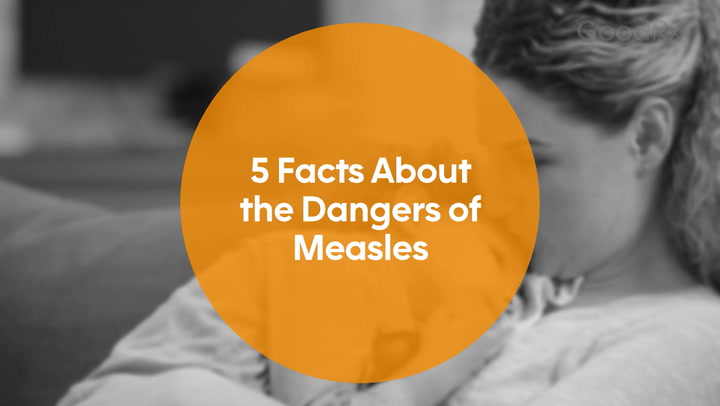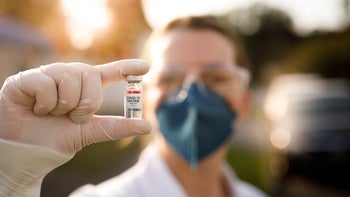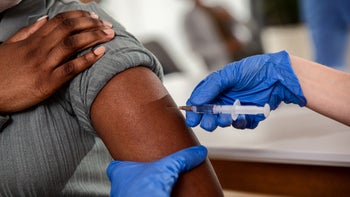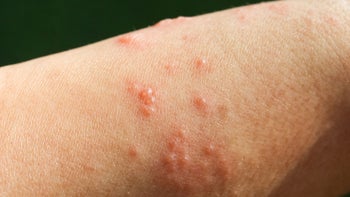
How Do Vaccines Work in the Body?
Key takeaways:
Vaccines teach the immune system how to quickly defend the body from germs.
There are several different vaccine types available. They differ in their active ingredients and how they work.
Vaccines go through rigorous development and testing to make sure they’re safe and work properly.
Table of contents

The COVID-19 pandemic made clear how important vaccines are to individual and community health. But vaccines aren’t new. They’ve helped keep people safe from deadly diseases for hundreds of years.
Even though vaccines have been around for a long time, scientists are always working to find new vaccines and improve on existing ones. So let’s take a deep dive into the research and approval process that makes sure the vaccines humans use are safe and effective. We’ll also review the different types of vaccines and the ingredients they contain. This way, you can feel confident and informed as you take important steps to protect your health and the health of your community.
How vaccines protect against disease
Vaccines teach your body’s immune system how to respond when you’re exposed to a germ or pathogen. Pathogens are organisms that can make you ill. These include bacteria, viruses, and fungi.
Prescription Savings Are Just the Beginning
See what other benefits you qualify for—from cashback cards to cheaper insurance.

The immune system has many moving parts and uses a complex process to deal with pathogens. This process can take some time, especially when you’re first exposed to a germ. Vaccines are designed to speed up that process and prevent you from getting sick when you’re exposed to that germ.
Traditional vaccines work by introducing a weak or inactive form of a pathogen into the body. The immune system recognizes the pathogen and gets rid of it. It then remembers how to do this again if you’re exposed to that same germ later.
Newer vaccine technology works differently. It teaches your immune system how to respond without actually exposing it to the germ. The end result is the same: Your immune system knows how to quickly respond when it meets the real thing.
How does the immune system work?
The immune system is made up of many different types of cells. These cells include:
B cells: These make antibodies, which prevent the germ from entering other cells or mark it to be destroyed.
T cells: Their role isn’t understood as well, but they likely clear out infected cells.
Memory cells: These help the body “remember” the germ so it can respond appropriately the next time it comes across the germ.
Many vaccines give you lifelong immunity, meaning you only need to get them once. But some vaccines need additional “booster” shots to keep the immune system activated. That’s because your immunity may lessen over time. And sometimes more than one dose is needed for the immune system to get full protection. In the case of influenza, a virus that continuously mutates (changes), people need a shot each year to protect against different strains.
Read more like this
Explore these related articles, suggested for readers like you.
How are vaccines created?
Vaccines are made using small parts of the actual pathogen, or similar cells. It also contains other chemicals to keep the vaccine safe and usable. To make a vaccine, scientists do several rounds of testing to see what best activates the immune system to respond.
Scientists often first test a vaccine on animals before introducing it to humans. Once scientists determine a vaccine is effective, it can then enter the process of clinical trials.
Clinical trials
After a vaccine is developed, and researchers know that it triggers an immune response, it is then tested in humans. This is done in three phases of testing:
Phase 1: The vaccine is given to a small number of healthy adult volunteers.
Phase 2: This involves hundreds of volunteers similar to the target vaccine population.
Phase 3: This compares the effects of the vaccine in thousands of people who received it with those who did not (controls).
Through these phases, researchers learn which dose is best and how people should respond to the vaccine. If at any point there are serious concerns about safety, the testing stops. The benefits of the vaccine must outweigh any risks before it is approved.
Testing continues even after the FDA approves a vaccine. This is phase 4 testing. In this phase, researchers continue to collect information on how people respond to vaccines in the real world. This helps identify possible side effects that are so rare they don’t show up in clinical trials.
After the FDA approves a vaccine for use, the next step is to figure out when and how it should be given. The Advisory Committee on Immunization Practices (ACIP) is a team of experts that meets at least three times per year to review all available vaccine-related information, such as clinical trial data and vaccine safety updates.
After reviewing the data, the panel makes recommendations about vaccines to the CDC. These guidelines show how many doses are needed for each vaccine and when they should be given.
What are vaccines made of?
In addition to the antigen, vaccines often contain other ingredients that help them perform better or keep them safe. Here are some examples of other ingredients:
Preservatives prevent contamination of vials meant to be used more than once.
Stabilizers help lengthen a vaccine’s shelf life.
Adjuvants are ingredients that boost the immune response.
Each ingredient in every vaccine is tested several times to be sure it’s safe and effective.
What are the different types of vaccines?
There are several kinds of vaccines that are commonly used. These include:
Inactivated: These vaccines use an inactive form of the germ. They often require boosters to maintain a strong immune response.
Live attenuated: These vaccines use a live, weakened germ. People with weakened immune systems may not be able to get this type.
mRNA: These vaccines don’t include a germ; they contain building blocks for your body to make proteins that look like a germ. These proteins then stimulate the immune response.
Viral vector: These vaccines use a different virus to teach the immune system to respond to the virus that you need protection from.
Recombinant, subunit, and conjugated: These vaccines use a piece of a germ, which is sometimes linked to a different protein.
Toxoid: These vaccines use a weakened form of the toxin created by a germ.
What is herd immunity?
Herd immunity happens when a large percentage of a community has immunity against an infectious illness. In turn, it’s harder for that illness to spread among other people. This lower rate of spread also helps keep safe the small percentage of people who can’t get vaccinated (like those with weakened immune systems).
Is natural immunity better than vaccination?
No, not necessarily. They both can protect people against certain diseases. But natural immunity means you have to be exposed to the pathogen. And it takes time for the body to respond when it sees a germ for the first time.
Being exposed to a pathogen before your body can create a response can put you at risk of serious complications. Vaccines let the immune system prepare in advance. So vaccines may be a safer way to protect yourself from serious illness.
Common questions
Yes, vaccines are safe. And they protect against at least 20 life-threatening diseases, saving 3 to 5 million lives each year.
Vaccines protect against infectious illness and disease caused by pathogens in the environment. They do this by boosting the body’s immune response — making it smarter, faster, and stronger.
Combination vaccines combine more than one type of vaccine into one shot. They’re commonly used for immunization in babies and children. This cuts down on the number of shots (and office appointments) needed.
More information and resources
The bottom line
Vaccines are a safe and effective way to lessen the spread of infection. There are many different types of vaccines. They differ in how they are made and what they contain. Talk with your provider about which vaccines you are eligible for and may need. Vaccines are one of the safest ways to keep yourself and the people around you healthy.
Why trust our experts?


References
Biggs, A. T., et al. (2022). Vaccination and natural immunity: Advantages and risks as a matter of public health policy. The Lancet.
Centers for Disease Control and Prevention. (2018). Ensuring the safety of vaccines in the United States.
Centers for Disease Control and Prevention. (2019). Combination vaccines.
Centers for Disease Control and Prevention. (2020). Role of the advisory committee on immunization practices in CDC’s vaccine recommendations.
Centers for Disease Control and Prevention. (2023). Explaining how vaccines work.
Desai, A. N., et al. (2020). What is herd immunity? Journal of the American Medical Association.
History of Vaccines. (2021). How vaccines work.
Pollard, A. J., et al. (2020). A guide to vaccinology: From basic principles to new developments. Nature Reviews Immunology.
Suvarna, V. (2010). Phase IV of drug development. Perspectives in Clinical Research.
U.S. Department of Health and Human Services. (2022). Vaccine types.
World Health Organization. (n.d.). A brief history of vaccines.
World Health Organization. (n.d.). Vaccines and immunization.
World Health Organization. (2020). How are vaccines developed?
World Health Organization. (2020). How do vaccines work?




























